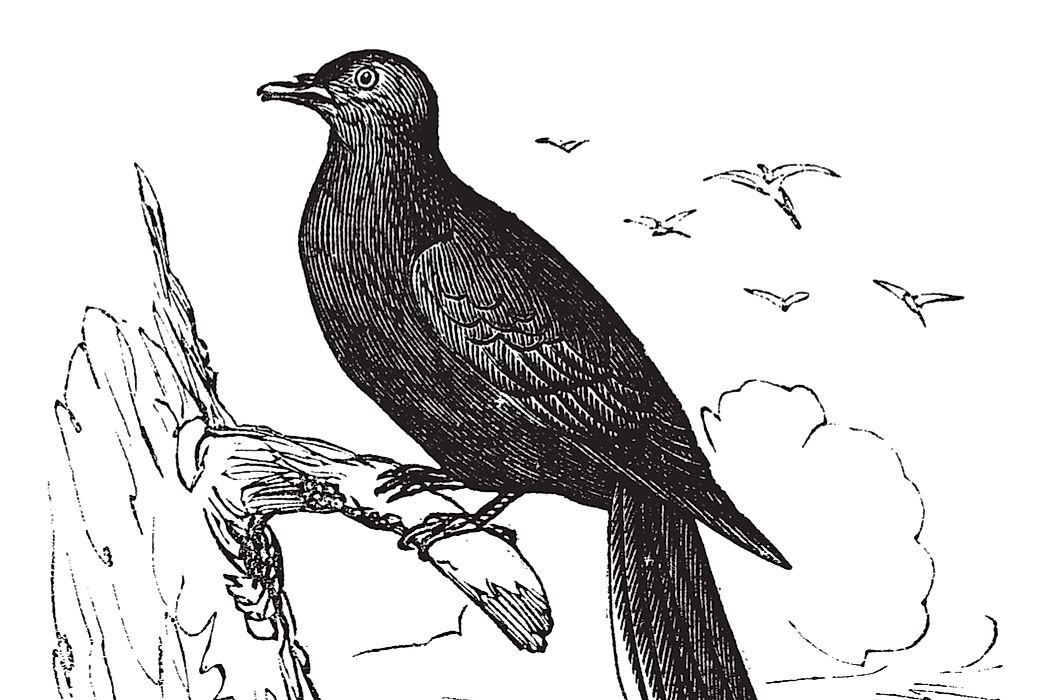What Happened to the Passenger Pigeon?

Passenger pigeons are an extinct pigeon species which were indigenous to North America. They were found on the eastern parts of the Rocky Mountains, right from the Atlantic coast to the Great Plains in the east, and the northern parts of Mississippi. The name passenger pigeon was derived from the French term passager which means "passing by". These birds were famous for their migratory behavior; in fact, their scientific name refers to their migration characteristics. Passenger pigeons resemble the Mourning Dove morphologically, and for years they were thought to be close relatives, and at times they were confused for each other, and further genetic analysis confirmed that they were more related to genus Patagioenas.
Physical Description
Passenger pigeons were sexually dimorphic in coloration and size. The male passenger pigeons were about 16.1 inches long while the female had a length of approximately 15.7 inches. The male had a grey upper part and a lighter under part with some black spots on their wings and iridescent bronze colored feathers on their necks. The female passenger pigeons were brown and dull than the male. Their young ones resembled the female minus the iridescence. The juvenile pigeons had dark brownish-grey breasts, necks, and heads, plus their wings had pale grey fringed feathers. These pigeons weighed about 12 ounces. The largest male pigeons had an 8.5 inch wing, 1.1 inch tarsus, 0.71 inch bill, and 8.3 inch tail. A fast flier could achieve a maximum speed of 62 miles per hour.
The Cause of their Extinction
Before the rapid decline in numbers during the 19th century, the population of passenger pigeons was stable for about 20,000 years. The primary cause of their extinction was excessive hunting which intensified after the arrival of the Europeans. These pigeons played a vital role in the lives of the Native Americans for about fifteen thousand years before the arrival of the Europeans. The natives believed that the passenger pigeons were the souls of their dead relatives. Therefore before killing the juvenile pigeons, the natives prepared an offering of brooches and wampum for the older pigeons.
The earliest account of pigeon killing by the Europeans dates to 1565 when Rene Laudonniere killed over 10,000 birds near Fort Caroline. The decreasing number of birds was noticed during the 1870s after many of them were slaughtered between 1874 and 1878. Their last large nesting was in Michigan where about 50,000 pigeons were killed daily for about five months. The remaining older birds tried creating another nesting ground in a different place, but the locals slaughtered them. By 1880s, there were small nesting grounds scattered all over, and since they were now wary, they abandoned their nests when attacked.
Conservation of the Passenger Pigeon
During the period of their last nestings, numerous laws had been made to protect the birds, but since they were ineffective, H. B. Roney led a campaign to protect the birds. A bill was brought forward in the Ohio legislature in 1857, but many of the committee members claimed that they did not need any protection. The public protested against mistreating of the birds during and after trap-shooting. Michigan legislature passed a bill which banned netting a bird within 1.9 miles from its nest and in 1897 another one which proposed a ten years closed season for these birds was drafted, but it was still not effective.
The Last Survivor
The last confirmed wild passenger pigeon named Button was shot in 1901 by Press Clay who at the time did not recognize the pigeon. Some of the passenger pigeons were kept in zoos and aviaries for exploration purposes, and the last known pigeon was known as Martha. Martha lived in the Cincinnati Zoo, and she passed away on September 1, 1914.











